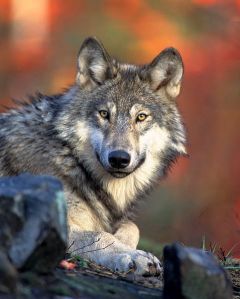 Werewolves are probably the most commonly encountered werecreature in mythology by far. But they are not the only kind of shapeshifting monster. Other examples are known from just about every culture on earth. Some are friendly; many are deadly dangerous. Some are animals who can transform into humans while others are humans (perhaps witches or sorcerers) who can transform into animals.
Werewolves are probably the most commonly encountered werecreature in mythology by far. But they are not the only kind of shapeshifting monster. Other examples are known from just about every culture on earth. Some are friendly; many are deadly dangerous. Some are animals who can transform into humans while others are humans (perhaps witches or sorcerers) who can transform into animals.
In my previous post, I looked specifically at werewolves. Now, it’s time to track down some more unusual shapeshifters. Here, then, are five interesting and distinctive werecreatures from around the world.
Wereseals
Selkies are found in the traditions of Ireland, Scotland, and the Orkney and Faeroe Islands. They are a race of shapeshifters, switching between human and seal forms by removing or putting on a seal’s skin. They are generally perceived to be gentle creatures who love to dance on the shore and occasionally fall in love with humans. Both male and female selkies are said to be lithe and attractive. A common story tells of a female selkie forced to marry a mortal man when he steals her sealskin. Eventually, she finds the hidden skin and uses it to return to the sea.
Selkies are related to the Finfolk, which are essentially the same sort of creature but with malevolent tendencies.
Wereowls
In Muskogee legend, stiginis (or stikinis) take the form of animals. Although they might take on the shape of any sort of wild predator, they strongly favor owls. In fact, stigini means “screech owl.”
By day, stiginis look like ordinary humans. By night, however, they vomit up their souls—along with their internal organs—and become monsters who like to feed on human hearts. Hearing the cry of a stigini is an omen of approaching death.
In some stories, mentioning these creatures by name puts one at risk of becoming one. Therefore, stories about stiginis are only told by certain medicine men and women. In other communities, however, they are more of a bogeyman figure casually discussed to frighten children.
Perhaps related is Hoklonote’she, a Choctaw evil spirit who often takes the form of an owl. Hoklonote’she can read peoples’ minds and apparently enjoys creeping people out by reciting their thoughts back to them.
Werehyenas
Werehyenas are common in the folklore of North Africa, the Horn of Africa, and the Middle East. In addition to being humans who can assume the form of a hyena, some legends tell of hyenas who are able to take on human form.
In the region around Lake Chad, it is believed that whole villages might be populated by werehyenas.
In Ethiopia, it is traditionally believed that every blacksmith (a hereditary occupation) is actually a bouda: a wizard with the power to change in to a hyena, in which form they rob graves at midnight. It should go without saying that they are viewed with suspicion by most of their neighbors! Many Ethiopian Christians believe that Ethiopian Jews are bouda and accuse them of digging up and eating the corpses of Christians.
Weredolphins
Brazilian folklore has the legend of the encantado or “enchanted one.” These are dolphin shape-shifters similar in some respects to faeries. They are thought to be dolphins with the ability to take on human form and not the other way around. Specifically, most of these legends involve the boto or freshwater dolphin of the Amazon River. Occasionally, the stories involve snakes rather than dolphins.
Encantados come from an underwater faery-land called the Encante. They are excellent singers and musicians who love parties and are often give to romantic liaisons with mortals. They only rarely take on human form, generally at night.
In addition to shapeshifting, encantados have other magical powers. They are able to control storms and exert a form of mind control over humans. They can sometimes turn mortals into encantados like themselves.
Encantados are dangerous, and many people in the Amazon region are terrified of them. They can inflict disease, insantity, and death, and are said to be fond of abducting humans they fall in love with and taking them to live in the Encante.
A Possible Weremesonychid
Mesonychids are an extinct group of carnivores that are most often described as a sort of wolf with hooves. Even though there haven’t been any mesonychids around for millions of years, a mysterious beast that terrorized France in the 1760s apparently bore a striking resemblance to one. Some witnesses described the so-called “Beast of Gévaudan” as a huge (horse-sized) creature combining features of wolf, bear, panther, and hyena. Some reported that it had cloven hooves, or that each digit was tipped with a hoof. Others said its claws were so heavy and thick that they merely resembled hooves. Such a creature would come close to matching the description of a large hyena-like mesonychid like the Pachyaena or Harpagolestes.
Furthermore, the locals claimed that this beast was, in fact, a sorcerer who shapeshifted into a fearsome creature. In other words, the Beast of Gévaudan was a human who apparently assumed the form of a prehistoric nightmare.



